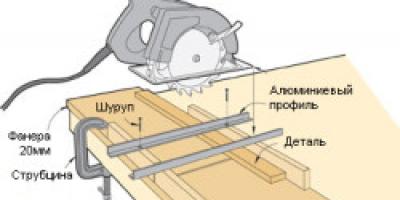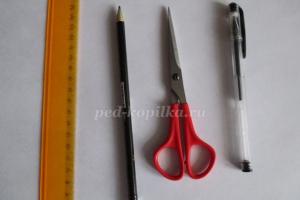Plexiglas is a material that has secured its position both in everyday life and in production. His specifications(strength, transparency, thermoplasticity) are not inferior to the properties of ordinary glass. The use of organic glass may require polishing. Is it possible to polish the material at home and how? What is involved in the preparation and processing process? Everything is not as complicated as it might seem at first glance.
Features of the material and scope of application
Organic glass is obtained from acrylic acid through various chemical reactions. This material is similar in various parameters to ordinary glass, but its nature is organic (hence the name of the material). There are several synonymous words - plexiglass, acryplast, carbonglass, etc.
Among the main characteristics of plexiglass we can highlight:
- ease;
- softness;
- ability to easily transform;
- flexibility during processing;
- high throughput;
- When exposed to certain chemicals, plexiglass decomposes.
The impact resistance of many types of plexiglass is 5 times greater than that of ordinary glass
Polymeric transparent material It is used in various areas of human activity, so the use of organic glass can lead to a change in its appearance - deterioration of transparency, reduced shine, the appearance of scratches, roughness and other unfavorable aspects. When severely damaged, carbon glass turns from glass into ordinary plastic. In this regard, the question often arises about the need to polish plexiglass at home.
Methods for polishing plexiglass at home
You can give plexiglass products their original appearance without resorting to any help. complex instruments or expensive materials.
There are several effective methods combating the “non-commercial” type of plexiglass:
- Felt + GOI paste.
- Use of dichloroethane.
- Using polishes.
- Homemade recipes (wine vinegar, toothpaste, etc.)
Using GOI paste, sandpaper and felt (with detailed video)
You should know that there are coarse, medium and fine types of GOI paste
Algorithm:
- Isolation of plexiglass from other structures and elements. If possible, separate the plexiglass from other structures (seal adjacent areas with tape, disconnect the plexiglass parts, etc.)
- Using sandpaper with a grain of 2000, process the organic glass, periodically wetting the surface with water (under running water or using a spray bottle). Uniformity and slowness are the main characteristics when performing this work. A matte, uniform surface should be the result of this labor-intensive step.
- The part, wiped dry, is polished using felt with GOI paste applied to it. This should be done slowly, achieving the highest quality result.
This method of restoring plexiglass is suitable for plexiglass if there are large scratches on it.
Following step by step instructions video material, you can easily cope with the task of eliminating plexiglass defects.
Home helpers (toothpaste, chalk and others) + video
Some craftsmen use chalk or toothpaste, applying these substances to felt or other soft fabric. How to polish - manually or using technology - is decided by each specialist independently. The main thing is to obtain a result in the form of a smooth and shiny surface.
You can use regular towels from natural materials. Apply a little toothpaste to them and rub it in a circle into the surface to be treated. After this, rinse the plexiglass with plain water.
Below is a video demonstrating how to polish car headlights using toothpaste.
Can I polish it myself using dichloroethane?
The use of this substance is appropriate when processing small areas plexiglass. Dichloroethane dissolves upper layer plexiglass, thereby improving it appearance, leveling the surface and eliminating scratches. The chemical is applied to the acryplast using a spray bottle and wait until it dries completely.
But using this method requires good skills in work, because when removing scratches, you can add unevenness to the glass, and chemicals are not useful for the master who changes the appearance of plexiglass.
Other scratch remedies
To give a smooth and shiny appearance, the product can be treated with any automotive polishing agents.
- It is advisable to test the effect of car polishes by trying to treat a small area first, so as not to spoil the entire product.
- If the result is satisfactory, then feel free to start working. To do this, apply car cosmetics to a soft cloth and wipe the product in a circular motion many times.
You can speed up the process using power tools - a polishing wheel, grinding machines. When using such devices, do not forget that the rotation speed should not be too high, so as not to “burn” the surface.
The Japanese Compound paste received good reviews in terms of polishing carbon glass.
The kit also includes a special polishing block.
Choice chemical substances for cleaning glass is a very important process, because some chemicals, instead of being useful, can cause severe damage to the surface, simply destroying it. Therefore, be very careful when using such products.
Any action to improve appearance acrylic glass It will be in vain if it harms your health. Therefore, when working, you must remember safety precautions:
- When working with sandpaper or grinder Wear safety glasses to prevent possible dust particles from getting into your eyes.
- Do not neglect the use of gloves, they are mandatory for safe work(when sanding the surface, when using chemicals). Select them according to the size of your hand to avoid excess fabric getting into the buffing wheel.
- Using chemicals, do not forget about the flow of fresh air into the room in which work is carried out.
- When working with special devices, be sure to check their serviceability and reliability electrical wiring and sockets.
- When spraying dichloroethane, use a respirator or a personal medical mask.
The process of polishing plexiglass at home is labor-intensive and time-consuming, especially if you work manually. But the result will definitely reward you for your efforts. The surface of the plexiglass will become smooth, even, without nicks or scratches and will delight you for a long time.
Plexiglas is a unique material that does not lose its appearance for a long time and can serve for many years. Despite this, during operation it is quite long time, the plexiglass may still become cloudy or scratches may appear on its surface, depending on the method of use, which may be deep or shallow, but they will still spoil the appearance of the product. If this happens to you, and the plexiglass product is no longer as bright and transparent as before, do not be upset, because you can polish the plexiglass yourself at home.
You will be able to give the product its original appearance, and for this you will not have to go to a specialized workshop, or buy expensive tools. To polish plexiglass at home, you will need some things that you most likely have in your home, or you can purchase them, because they are not expensive.
Before you start polishing plexiglass, you need to understand that this process will require a lot of your time, because this process is quite labor-intensive. You should not use any chemicals to treat the surface of plexiglass, since this action may lead to clouding of the material, which is completely undesirable.
The process of polishing plexiglass at home
For polishing you will need two things: GOI paste and a small piece of felt. You need to apply a small amount of GOI paste to a piece of felt, and then start rubbing this paste into the surface of the plexiglass product that needs to be polished. Polish in this way for as long as possible until shine appears on the entire surface of the polished product.
There is also another way to polish plexiglass at home. Take waterproof sandpaper and start polishing the surface of the plexiglass with it, wetting it periodically. After this, it is necessary to continue polishing the plexiglass using felt and GOI paste. This method is suitable for products with large scratches on the surface.
There is another way, but it will require some operating skills. First of all, polish the surface using sandpaper; you need to polish it well. After this, take a can with a burner and begin to carefully singe the entire surface of the plexiglass. Be careful and do not stay in one area for too long, otherwise you will burn the product.
Unpleasant scratches on the surface of plexiglass are not difficult to remove using the simplest tools.
However, you should know that scratches can be removed only in glasses that are not associated with optics, because there is a high probability of slight distortions after processing, which can adversely affect vision.
In general, removing a scratch from plexiglass is easy.
To remove a scratch from plexiglass you need to stock up on fine sandpaper and polishing agents. They begin work with sandpaper, with the help of which they try to evenly remove the layer with the scratch.
It must be said that removing a scratch from plexiglass is quite a long job that requires a lot of patience. But if you have enough patience, it is quite possible to cope with a scratch.
If the scratch on the plexiglass is really deep, in order to simplify the work and make it easier, it is better to start processing the plexiglass with fairly coarse sandpaper. As the layers of glass wear down, use increasingly finer sandpaper.
At the end of the work, choose the finest sandpaper for sanding plexiglass, that is, the so-called “zero”.
This completes the sanding stage. However, this does not mean that the scratch on the plexiglass has already disappeared.
In her place, on at this stage there will be many small scratches that need to be removed using another method. Namely, polishing is used to remove small scratches from plexiglass.
How to remove small scratches
Polishing plexiglass is an even longer and more labor-intensive job that requires patience and time. However, sometimes it makes sense to carry out such grinding. For example, when it is not possible to completely replace the glass with a new one or for some reason it is not rational.
How to remove scratches from plexiglass
What means are used to polish plexiglass?
The best option is GOI paste. This paste can be purchased at construction stores, it is sold everywhere and is not in short supply or exotic.
The paste is applied directly to the surface of the plexiglass, after which they begin to polish it using a piece of felt. Scratches on plexiglass should be polished actively and intensively.
Moreover, the more intense such grinding takes place, the better, because the faster the problem will be solved and the scratches will disappear.
Using auto polish
By the way, in addition to GOI paste, you can also try car polish. You need to choose a high-quality car polish, a colorless variety. But you need to first check how this product will work on a small piece of plexiglass.
If everything is fine, then the polish is applied to the surface of the plexiglass and intensively polished with felt. At the end of the work, when the scratches are eliminated, the plexiglass is wiped with sunflower oil.
Removing scratches from plexiglass in a car service center
Of course, if possible, it is best to replace scratched glass rather than remove scratches from it. It's much simpler, faster and easier.
You can also consider the option of car service. Today, any car service center will be able to perfectly grind and polish plexiglass, thereby eliminating any scratches from its surface.
True, this costs money, so you will still need to decide what is cheaper: replacing the glass or grinding it and then polishing it in a car service center.
In any case, the method of removing scratches from plexiglass, which is described in this article, can sometimes become a real salvation and it doesn’t hurt to know about it.
– a synthetic polymer material that has all external characteristics inorganic, but in many ways superior to it in physical and chemical properties. Unlike ordinary glass, plexiglass is characterized by increased strength, moisture resistance, high transparency and light transmittance, and much lighter weight.
However, over time, small chips and scratches appear on its surface, and transparency decreases significantly. Polishing plexiglass will help restore it to its original appearance and eliminate defects. You can perform this procedure at home.
How to properly polish plexiglass
You cannot polish plexiglass with special tools - this will lead to injury to the surface. For the same reasons, you should not use aggressive chemical solutions, for example, acetone. The best way To return it to its former shine - manual polishing with sandpaper, however, there are rules here too.
First of all, the material must be prepared for polishing. To do this, it is best to remove the plexiglass from general design. If this is not possible, the nearest surfaces in contact with the plexiglass should be sealed with tape to avoid damage.
- We clean the material from dust and dirt with a soft felt cloth or just a cotton pad.
- For initial polishing, you will need coarse 800-grit sandpaper, which will remove large imperfections and make the surface evenly matte. Important condition: sanding must be done with the addition of a small amount of water (“dry” polishing will lead to mechanical damage!).
- The next stage is grouting with finer sandpaper with a grit of 2000, which will eliminate deep scratches and pits.
- After the main stage of polishing the plexiglass, wipe it dry and apply polishing paste - special remedy to restore shine. After uniform rubbing of the paste, the surface gradually acquires its former transparency.
How else can you polish plexiglass?
The polishing method described above is the main, most commonly used and most accessible. But there are other options for updating plexiglass: for example, using GOI jewelry polishing paste. In this case, a paste with added water is applied to the product and rubbed in in a circular motion. soft cloth. The next step is fine polishing emery cloth(1500 – 2000). At the end, the surface is again treated with paste and wiped dry.
Another affordable way updating plexiglass at home - processing using auto polish. The product is applied to the prepared surface and rubbed in evenly. It will help to save the result finishing machine oil.
As you can see, it is not so difficult to return plexiglass to its attractive appearance manually - you just need to decide on the polishing method. At proper care and timely polishing, plexiglass will retain its transparency and pristine shine for a long time.
Organic glass is a thermoplastic material known for its impeccable quality. It has a high level of transparency and is significantly superior to ordinary glass; it freely transmits light rays without any distortion, clouding or other defects.
What you need to know about polishing plexiglass? No matter how durable and reliable the material plexiglass is, it will still show minor cracks and minor scratches and cuts. This occurs due to mechanical stress during its operation. Although polishing plexiglass at home is not an extremely difficult process, it is a rather lengthy, meticulous and patient task.
The main thing that a polisher should know is that aggressive, strong chemicals and substances cannot be used when polishing. If polishing is carried out using them, the glass may become dull, cloudy and less transparent.
Required tools and materials
 Many who have come across this material have wondered how to polish plexiglass themselves, without resorting to the expensive help of a professional. It is possible to quickly and efficiently polish plexiglass at home without significant costs. Moreover, the result will be significantly better than with machine processing, due to the rapid heating and melting of the surface.
Many who have come across this material have wondered how to polish plexiglass themselves, without resorting to the expensive help of a professional. It is possible to quickly and efficiently polish plexiglass at home without significant costs. Moreover, the result will be significantly better than with machine processing, due to the rapid heating and melting of the surface.
For this you will need following materials and tools:
- A roll of masking (paper) tape;
- Paper;
- Sandpaper grade 800 and 2000;
- Soft cloth;
- Blade knife or sharp scalpel.
 1. In order for polishing plexiglass at home to proceed conveniently and reliably, it is necessary to remove the glass being processed from the product.
1. In order for polishing plexiglass at home to proceed conveniently and reliably, it is necessary to remove the glass being processed from the product.
2. First of all, it is necessary to protect the edges of the glass with tape by gluing it from the ends around the perimeter with an overlap of 1 - 2 mm. If for some reason it is impossible to remove the glass from the product, then work this way, but cover all non-glass parts of the product. To ensure that glue does not remain on the glass at the end of the job, use proven high-quality tape. Although we have already described in the previous article. After this, round the corners and remove the remaining tape by cutting them off with a scalpel.
3. When all of the above are done preparatory work, let's move on to polishing. Take 800 grit sandpaper and start sanding the surface of the glass with a little addition of water. This process should be uniform and neat. When sanding is complete, we wipe the surface and see what we have.
Oddly enough, the plexiglass should be completely opaque. There is no need to be afraid of this, this is how it should be. If the glass is not uniformly frosted, continue sanding until you achieve uniformity, and also carefully monitor the absence of potholes in the surface.
4. When you achieve the desired result, take 2000 sandpaper and continue sanding with it. You will notice that the glass begins to become more and more transparent. There should be no scratches or various cracks throughout its entire area. If you find any defects on the glass, then sand again with 800 sandpaper until they disappear, and then again with 2000 sandpaper. Once the desired result is achieved, wipe the surface of the plexiglass.
 5. Next you will need a small amount of polishing paste, which can be purchased almost anywhere. Apply the paste to a piece of soft cloth and continue sanding with gentle, measured movements. Very quickly you will notice that your plexiglass takes on an increasing shine.
5. Next you will need a small amount of polishing paste, which can be purchased almost anywhere. Apply the paste to a piece of soft cloth and continue sanding with gentle, measured movements. Very quickly you will notice that your plexiglass takes on an increasing shine.
6. After this, you will have the opportunity to carefully examine the glass for any residual defects. If you find any, you will have to repeat everything grinding steps again. If you are satisfied with everything, you can remove the tape and make sure that it does not leave any glue on the edges of the glass.
7. If you removed the glass before work, then after removing the tape, you need to grind the edges of the glass in the same way. After this, your organic glass will shine like new.
In addition to the method outlined above, there is a good opportunity to polish plexiglass at home using felt and GOI paste. If you don't have felt on hand, it can easily be replaced with a piece of felt felt, a wool insole, or a regular pad of cotton wool. The method is quite simple: apply GOI paste to plexiglass and treat the surface with one of the above materials until the desired result is obtained.
 If the organic glass being processed is quite old, then you need to use fine sandpaper, wet the surface with a spray bottle and make sure that it does not dry out. After this, wipe with a soft cloth and rub with GOI paste until shiny.
If the organic glass being processed is quite old, then you need to use fine sandpaper, wet the surface with a spray bottle and make sure that it does not dry out. After this, wipe with a soft cloth and rub with GOI paste until shiny.
You can also use car polish for polishing. Apply it to the glass and rub it with felt. But it is worth noting that before doing this, test the polish on a small area of glass and make sure that it does not spoil it. After all this, rub the surface with any liquid oil, from machine oil to sunflower oil.
If you have a torch, you can polish the glass by first treating it with scratch paper, and then evenly burn the surface with the torch. But be careful not to linger too long in any place so as not to scorch the plexiglass.
Unique polishing agent
Any polishing method has positive and negative sides. For example, GOI paste contains chromium oxide, which penetrates into any surface irregularities, from where it is very difficult to get it out. The glass can also be damaged if there are quite large grains in the GOI paste. Therefore, it can easily be replaced with another substance, but you need to make sure that this substance does not contain ammonia, which can cause the glass to become faded.
You can do it yourself unique remedy for polishing plexiglass. You will need a can of any spray, hot water and white wine vinegar. Mix water with vinegar 1:1 and fill the can with this mixture. This will give the glass smoothness and protect it from fungus and mold.
You can also polish plexiglass with various toothpastes, powders or chalk with a soft cloth.
Alternative Sanding Methods
 For grinding you need a polishing wheel, paste, chalk, sandpaper, but at the same time you always need to prepare felt or other necessary fabric.
For grinding you need a polishing wheel, paste, chalk, sandpaper, but at the same time you always need to prepare felt or other necessary fabric.
Crystal purity and dazzling shine are not always achieved from glass. Sometimes the task is to obtain frosted glass, for example, for some musical equipment or to simply make various items of home or office interior original. To do this, glass is treated with larger abrasive materials, for example, fine-grained sandpaper or using chemical matting.
Note to beginners!
When polishing organic glass, you must always remember about your own protection and safety for your health. For example, when grinding with GOI paste, you need to know that it can be seriously poisoned if it gets into the internal organs.
Because of this, you must be careful to maintain moisture during the polishing process and avoid creating dust that can be easily inhaled. It is best to use personal protective equipment: respirator, gloves, safety glasses. This will prevent toxic substances from entering your body and polishing plexiglass at home will not harm you.
Video: POLISHING Plexiglass








